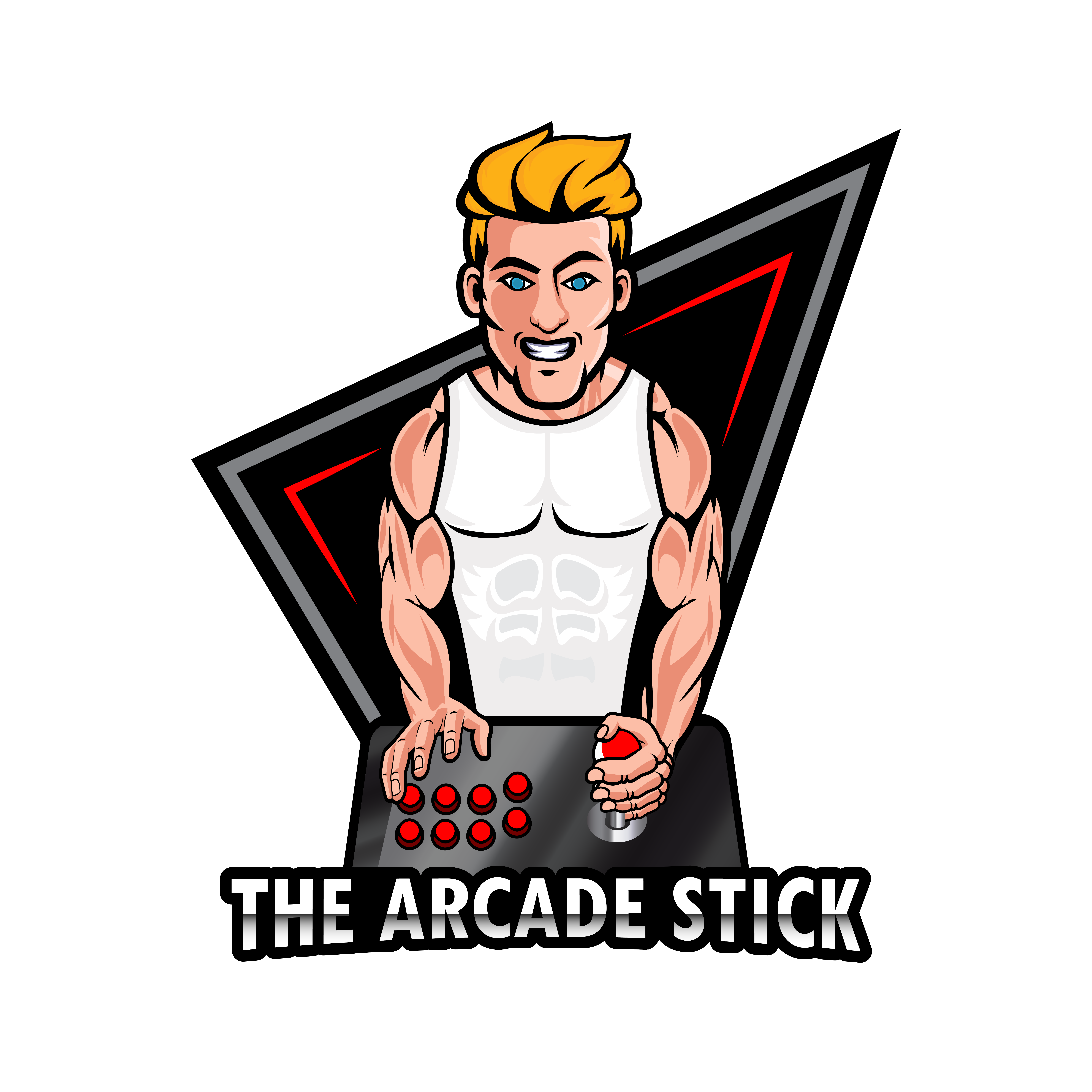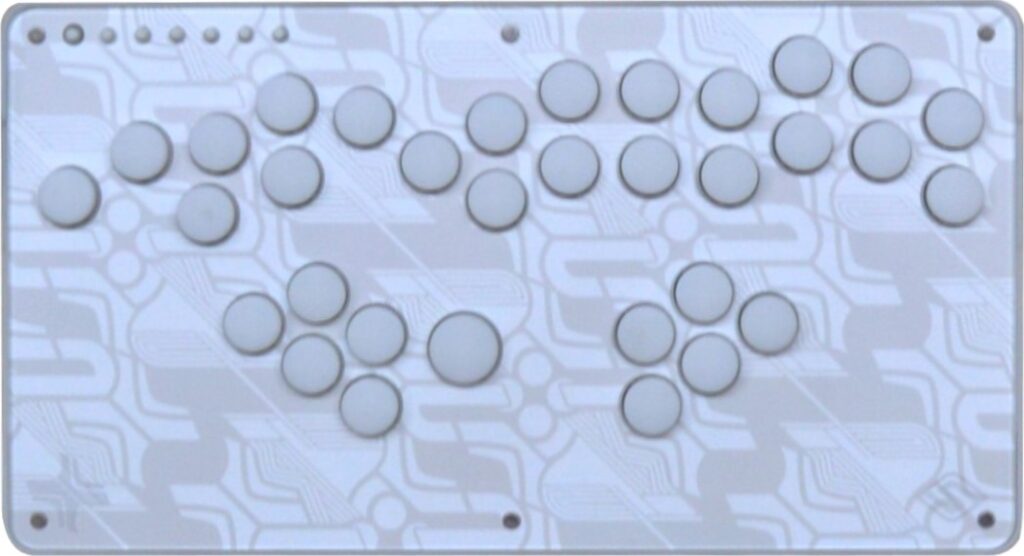| Price | Satisfye |
| Release | 2023 |
| Compatibility | NS / Wii / GC / PC |
Introduction
The Glyph is a collaboration between Limit Labs and Satisfye. It is a controller with more buttons than you have probably ever seen on similar controllers, but do not be overwhelmed: the primary layout is meant to fit different layouts in one.
The layouts include:
- Full
- Platform fighter
- FGC
- Split FGC
- Custom
The Glyph is a modular controller that allows you to change layouts within minutes. You just need to remove the magnetic layout panel, hot swap the relevant switches, and insert the new panel.
The controller is brought to you by some of the Smash community’s legends of the box/rectangle controller scene, including Matt Crane, Matt Samperi, Jake Johnson, Philip Brand, and Charlie Wheeler.
The Glyph was inspired by Crane’s C53 prototype, and Crane is the creative lead of this ambitious project. Haystack built upon the preexisting Haybox firmware. The Glyph’s firmware remembers your preferences per console.
Performance
The Glyph has custom PBT keycaps and Gateron G Pro 3.0 Silver linear switches known for light actuation, a short stroke, and lube for smooth inputs. If you have another preference, MX compatible switches are viable using the key pulling tool without soldering.
The keycaps are 3D printed, light, and have a little bit of a texture to them. This is a slim controller with decent wrist space that varies per layout.
Platform fighter players should feel right at home with the Glyph. Other players may feel that the positioning of some of the buttons is not like what they are used to. For example, the jump button’s position may not be your cup of tea.
The Split FGC layout seems like what a Smash player would be comfortable using when starting to play other fighting games from Street Fighter to Tekken, and that is due to the middle gap, hence the name. The standard FGC layout would be closer to what those latter players are used to, but the jump button’s position is still different.
You see, it seems the Glyph makes sacrifices per layout to cater to all layouts, so if all you want is to play Guilty Gear, for instance, a standard leverless controller may be a better bet.
Moving on, there are seven function buttons. The leftmost one lights up, and the rightmost one can toggle between layouts that are indicated by LEDs. Something cool is that even the touchpad can be a face button for faster presses in training mode, for example.
Hardware
The Glyph’s hardware boasts:
- Shatter-resistant polycarbonate panels that are transparent with additional scratch-resistant coating
- Premium aluminum rear shell that is rigid without sacrificing lightness
- Water-resistant polyester art sheets
Glyphs come with Nintendo Switch, Wii, GameCube, and PC support. If you opt for the retro cable pack, you get Nintendo 64, SNES, and NES compatibility as well.
Brook Wingman adapters are supported too for compatibility with the PlayStation 5, Xbox Series X, and so on. Each Glyph cable has its own stress relief anchor to protect the USB-C port.
You can pack your Glyph in a folio. It is made of felt and has an elastic strap over the notched flap. The elite case features a rugged protective shell and velour lining. Inside, there is storage for the Glyph, layout plates, art sheets, four cable ties, and two zipper pouches.
More interesting design elements:
- Threaded metal inserts and Torx head screws to mod the Glyph more easily
- Only one Torx size to disassemble the Glyph with a single tool
- USB port that is mounted on a separate PCB for easy replacement
- Open source pinouts and CAD models for custom expansion modules
- Dual expansion bays for future accessories
- Removable rear grips
Note that the keycaps can come off with just your fingers, which is convenient.
Appearance
The basic Glyph bundle features a shell powder-coated in arctic white. The Glyph founder bundle has anodized gold instead. You can choose the colors of the aluminum rear shells, keycaps, menu buttons, cable anchors, and rubberized rear grips. We at The Arcade Stick can provide you custom art as a third party.
Even the art can be swapped out in seconds, and the RGB LED can be adjusted on the go, including color, brightness, and animation. The expansion bays are built in, the firmware is open source, and templates are publicly available.
Conclusion
The Glyph is one of the most impressive fighting game controllers to come out since the entire genre’s inception.
- Modular design
- Numerous layouts
- Comfortable size
- Customizable art
- Color options
- Storage options
- RGB LED
- Button positioning
Rating
⭐⭐⭐⭐⭐

